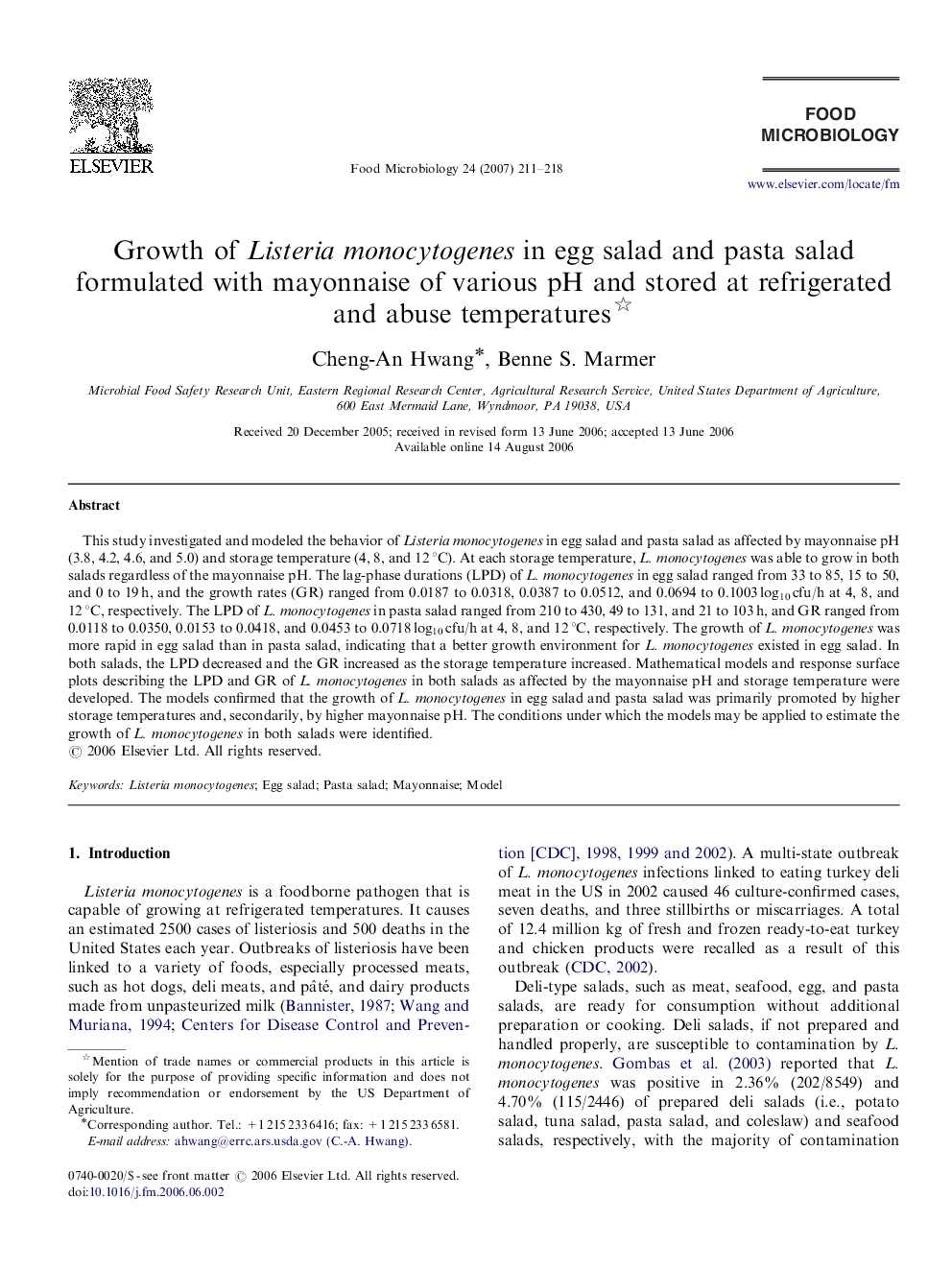| Article ID | Journal | Published Year | Pages | File Type |
|---|---|---|---|---|
| 4363859 | Food Microbiology | 2007 | 8 Pages |
This study investigated and modeled the behavior of Listeria monocytogenes in egg salad and pasta salad as affected by mayonnaise pH (3.8, 4.2, 4.6, and 5.0) and storage temperature (4, 8, and 12 °C). At each storage temperature, L. monocytogenes was able to grow in both salads regardless of the mayonnaise pH. The lag-phase durations (LPD) of L. monocytogenes in egg salad ranged from 33 to 85, 15 to 50, and 0 to 19 h, and the growth rates (GR) ranged from 0.0187 to 0.0318, 0.0387 to 0.0512, and 0.0694 to 0.1003 log10 cfu/h at 4, 8, and 12 °C, respectively. The LPD of L. monocytogenes in pasta salad ranged from 210 to 430, 49 to 131, and 21 to 103 h, and GR ranged from 0.0118 to 0.0350, 0.0153 to 0.0418, and 0.0453 to 0.0718 log10 cfu/h at 4, 8, and 12 °C, respectively. The growth of L. monocytogenes was more rapid in egg salad than in pasta salad, indicating that a better growth environment for L. monocytogenes existed in egg salad. In both salads, the LPD decreased and the GR increased as the storage temperature increased. Mathematical models and response surface plots describing the LPD and GR of L. monocytogenes in both salads as affected by the mayonnaise pH and storage temperature were developed. The models confirmed that the growth of L. monocytogenes in egg salad and pasta salad was primarily promoted by higher storage temperatures and, secondarily, by higher mayonnaise pH. The conditions under which the models may be applied to estimate the growth of L. monocytogenes in both salads were identified.
